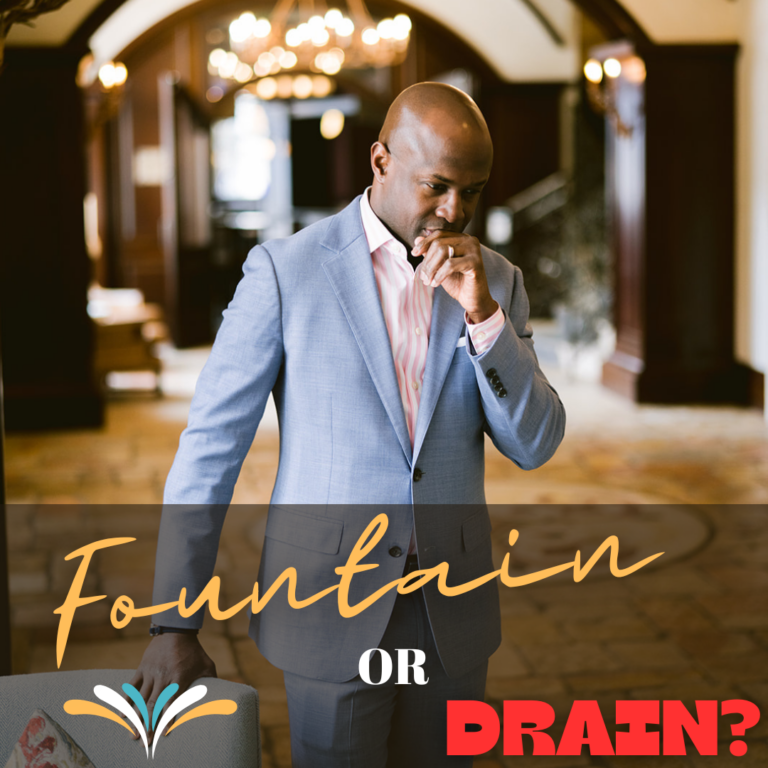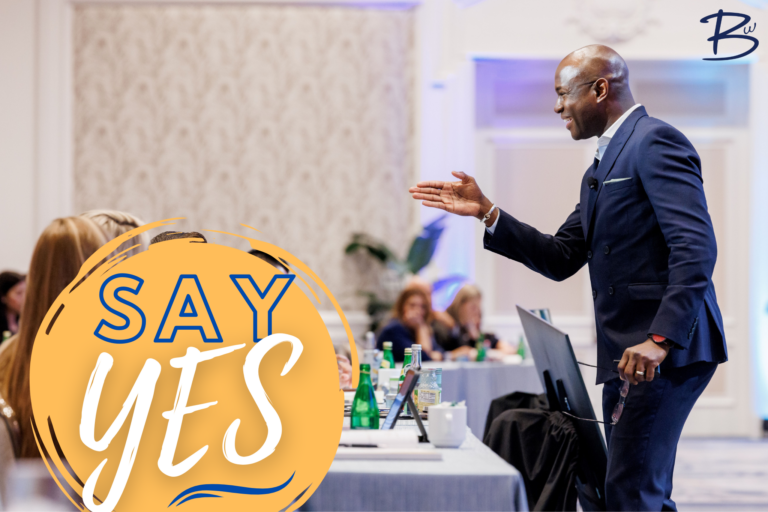
Are You a Fountain or Drain?
Fountains give nourishment. Drains take it away. Am I a fountain or a drain? That is the essential question that each of us should ponder
Share this post:
Have you ever walked into a business and left before you were served? That scenario has happened to me multiple times. On past occasions, I left because the staff showed no sense of urgency to be of service. Please note that the business(s) had the product or service I wanted, but I left because there was an obvious sense of apathy among the staff. Yes, your customers can feel the apathy; especially if the majority of the staff look like they would much rather be anywhere else besides work.
Example 1:
I was at a hotel recently and getting ready to check out. I had two bags with me and while approaching the front desk, I saw the front desk agent and the bellman casually talking. I could tell it was a casual conversation based on their postures. The agent was slouched over the desk, the bellman was leaning on the desk with one elbow, and his feet were crossed. I know that co-workers are often times good friends so casual conversations amongst the staff are to be expected. However, if a customer approaches, PLEASE stop the chit-chat, assume a professional posture, give eye-contact, smile, and welcome the customers as though you have been waiting just for them all day. So as I approached the desk, the front desk agent and bellman continued to chat. Even when I actually got to the desk and looking both of them in their eyes, there was still no change. I (the guest) had to be the one to say “Good Morning”. [Note: If your customer has to acknowledge you first, then you have failed.] Being eager to serve shows that you hardly can wait to serve your customers, and it shows in your eye contact, tone of voice, and overall body language.
Example 2:
The phenomena of the customer being the first one to give a greeting is more common than you may think. On a recent trip to the shopping mall, I decided to keep track of how many times I said “hello” or “good afternoon” before the store attendant did. Each time, I waited until the attendant saw me, then waited at least 25 seconds while I was directly in front of the attendant. In other words, I gave ample opportunity for the attendants to greet me first. On three different occasions within a 30-minute span, I was the one who had to say hello first in order for someone to acknowledge that I was in their store and needed assistance. Not good.
Example 3:
On a recent trip to Texas, I was on my way to pick up my rental car at the Austin International Airport. As I was walking to the Enterprise Rent-A-Car parking lot, I noticed one of the employees walking towards my direction. I thought he was going to the airport terminal where I just came from. As it turns out, he was actually walking towards me to greet me! He met me halfway between where I was and the rental car booth. That rental car agent was eager to serve.
Many people believe that the greeting is the first step of service, when in fact, being eager to serve happens before the greeting. Being eager to serve means that you are constantly looking for ways to engage your customers. Many of you reading this have heard of the 10 feet / 4 feet rule (or 3 meters / 1.2 meters). Basically, if a customer is within 10 feet of you, give eye contact, smile…(at the very least, acknowledge that the customer is alive!). If you are within 4 feet, then you initiate dialogue, offer assistance, etc. So if you are in an elevator and a customer comes into the same elevator, you are automatically within the 4-feet rule. This means, you are not allowed to look down at the floor or look at the elevator numbers passing by, hoping that your floor comes soon (so you won’t have to speak). I have seen that transpire many times also.
The purpose of being eager to serve is to show your customers that there is nothing more important, at that moment, than serving them. Your actions should say, I am at your service. So, instead of walking out of a business because of the apathetic staff, the eagerness of the team should pique your interest and have you wondering, “WOW, I can’t wait to experience the rest of the service”. If your goal is to create an exceptional experience for your customers, then you must be attentive…be hospitable…be memorable, and above all, be eager to serve.
Recommended Action Steps:

Fountains give nourishment. Drains take it away. Am I a fountain or a drain? That is the essential question that each of us should ponder

Yes. Three letters. Small, but mighty. There is so much that is written about boundaries and saying “no.” Make no mistake, boundaries are essential. They